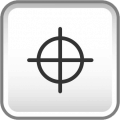You want as many datums as you need.
A turned, radially symmetric part? 2 might be fine.
A cast and post machined frame with many secondary features to mount other components? You might have dozens of datums.
Generally, for a 3D part, 3 datums is a good starting point. Remember, the datums are telling you where the designer wants the coordinate space to be oriented about.
In your case, datum A is a good start. That tells the inspector to put the part on a flat plate. Now, how to stop it sliding around the plate? Datum B could be one side of one pin. Easy. But how perpendicular does that face have to be to A? You need to define the limits on the face that will be designated B. Or use the center plane of that one pin as the datum. This is easier to understand, but a bit harder to fixture and inspect. Now your part is on a table, butted up against a wall. But it can still slide along the wall. Ok, so what's datum C? Use another face of the same pin (one of the short sides). Does the pin have to be rectangular? Or is "close enough" ok? How big is the mating hole? You need another tolerance on the face that will be designated datum C. You need to specify how perpendicular that face has to be relative to both datums A and B.
Once you have your 3 datums, the part is fixed in space. NOW you start thinking of the limits on the pins. If all the parts get oriented the same way against the same faces, what tolerance can you allow on both the size of the 1st pin, the 2nd pin, and the distance between them?
You are permitted to make datums from the center points/planes of each pins (across the same pin's faces) but not in reference to the other pin.
Note: if a datum callout is IN LINE with the dimensional value of a feature of size, you are NOT indicating a single face, but rather the center plane or axis that the feature results. We won't go into datum targets just yet (how to measure and describe the datum). In drawing 1, datums B and C (while illegal) would be indicating the datum is the centerplane in between the centerplanes of both pins. In a perfect world, they would be the center planes of the part as well. But imagine how hard that would be to find the actual datums! You need to measure 3 points on either side of each pin to get 2 planes, then place a theoretical plane in between those 2 planes. And that gives you 1 datum. A CMM can do it, but it makes for stupid (impossible?) fixtures if you want to gauge inspect each part.

